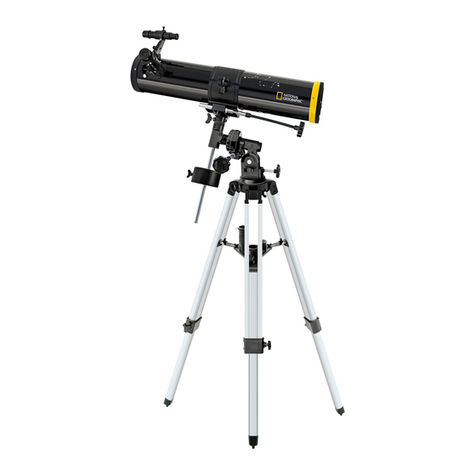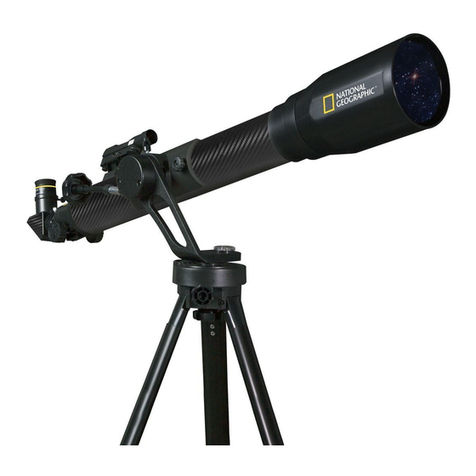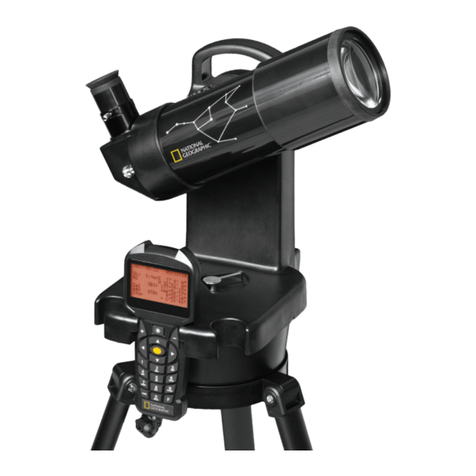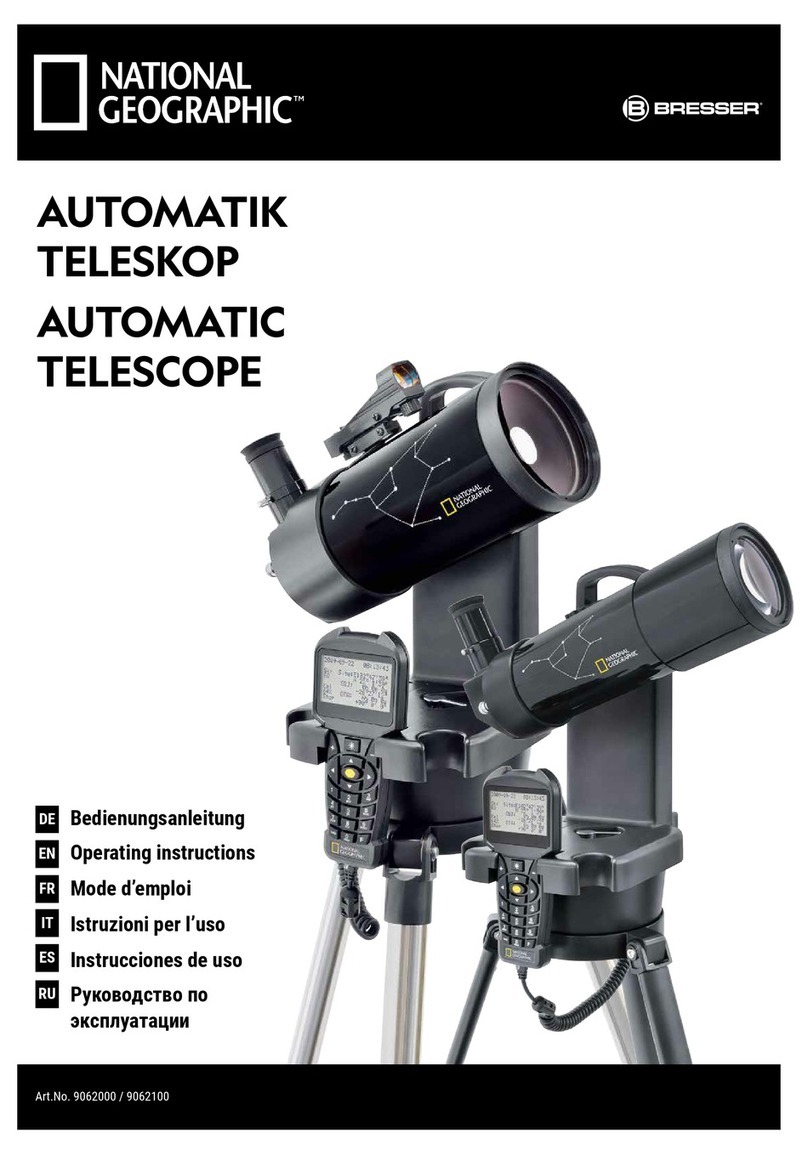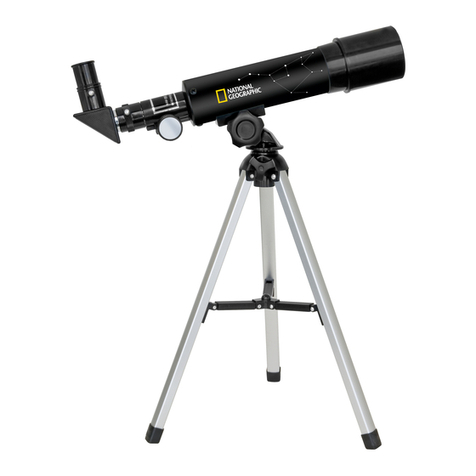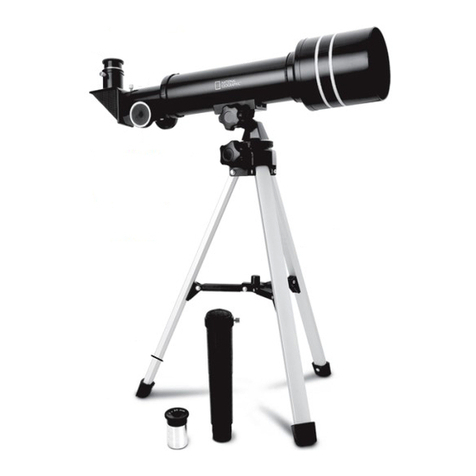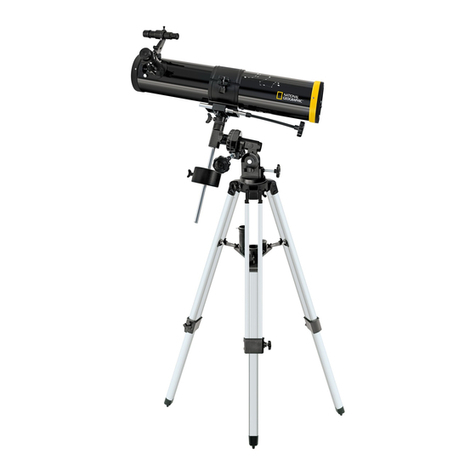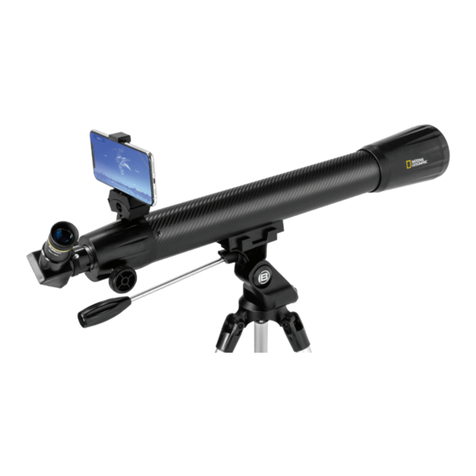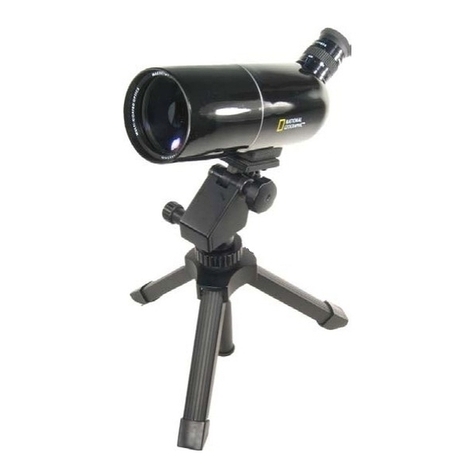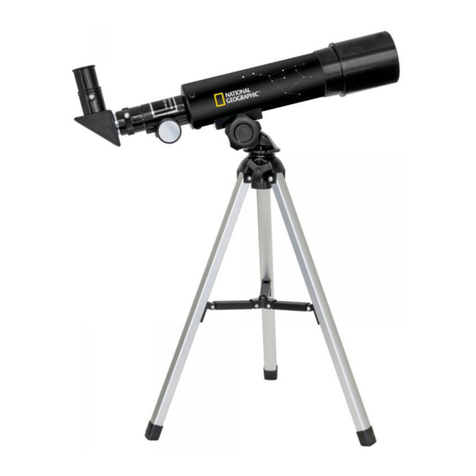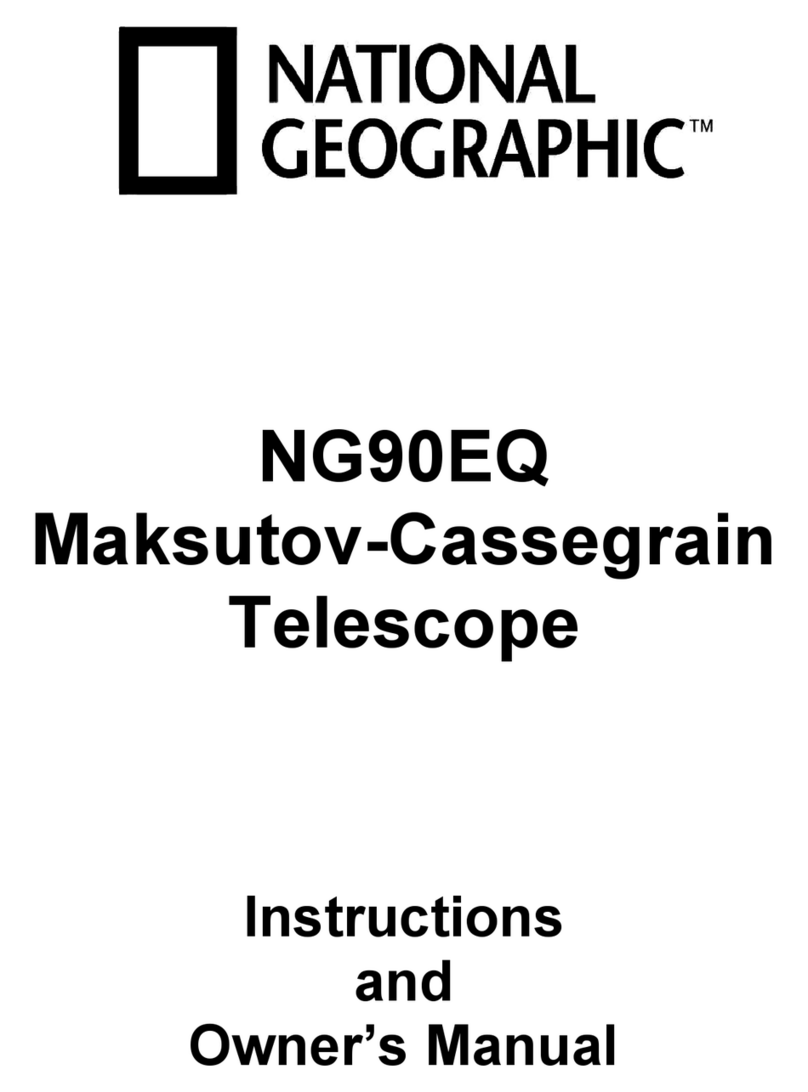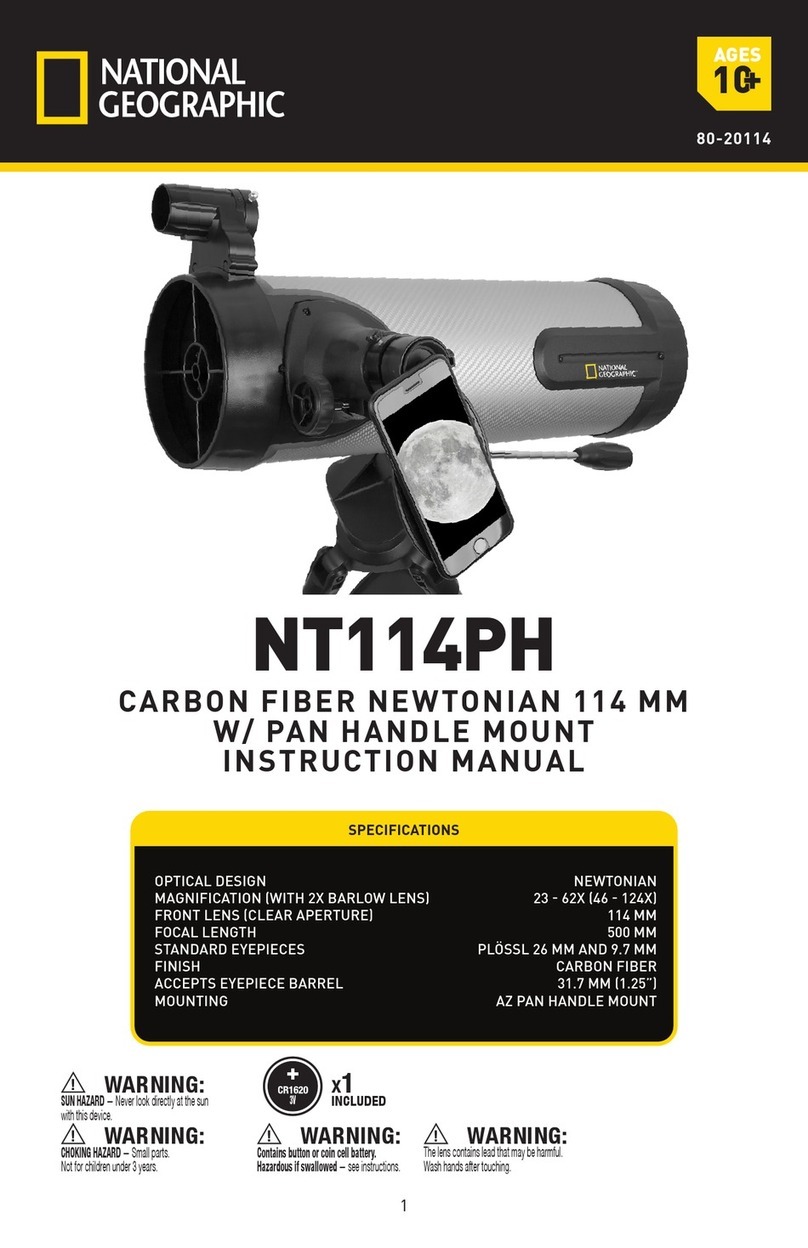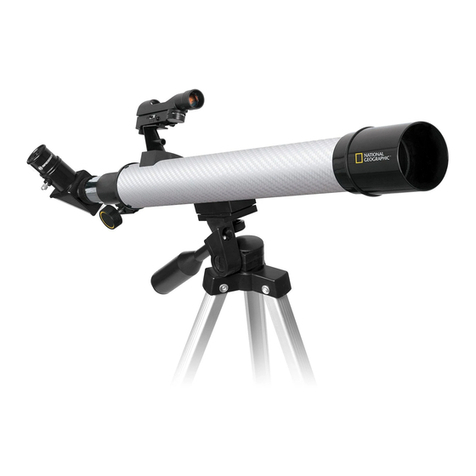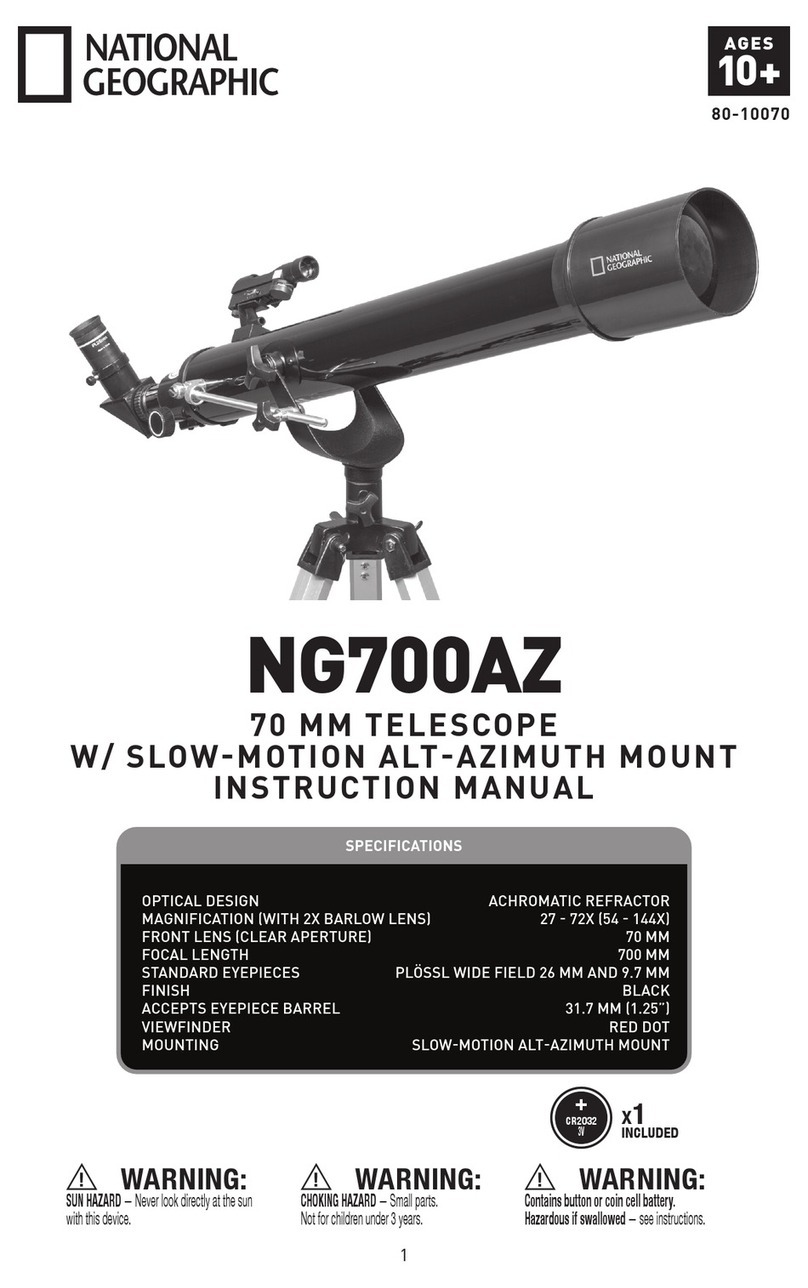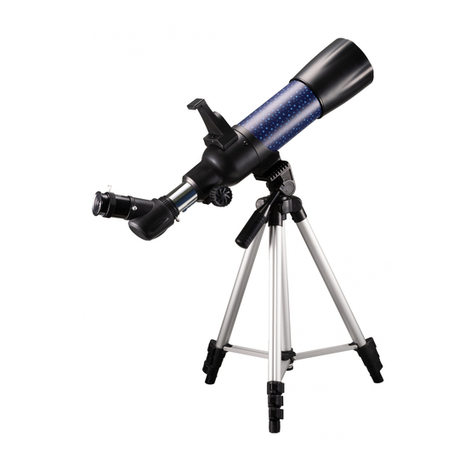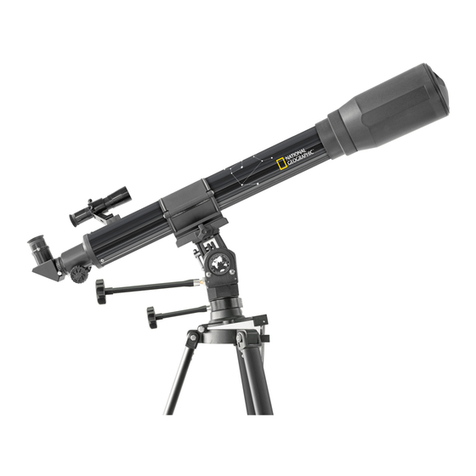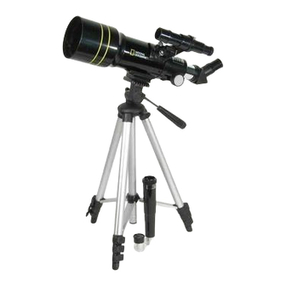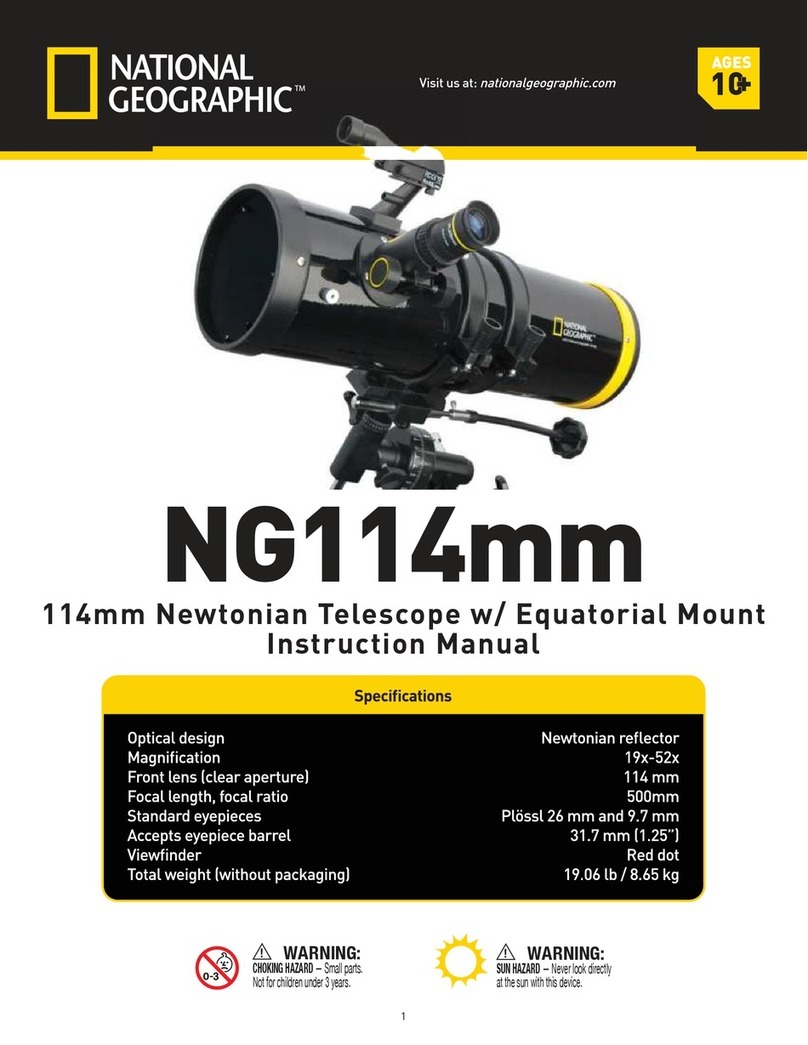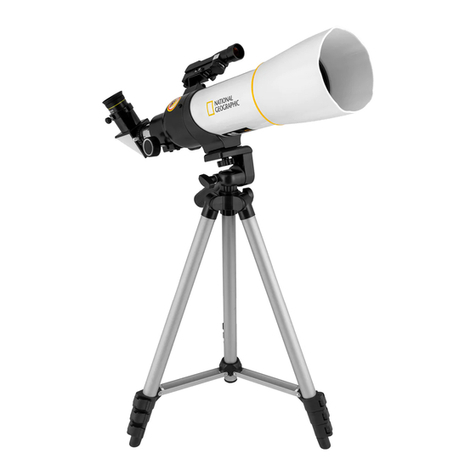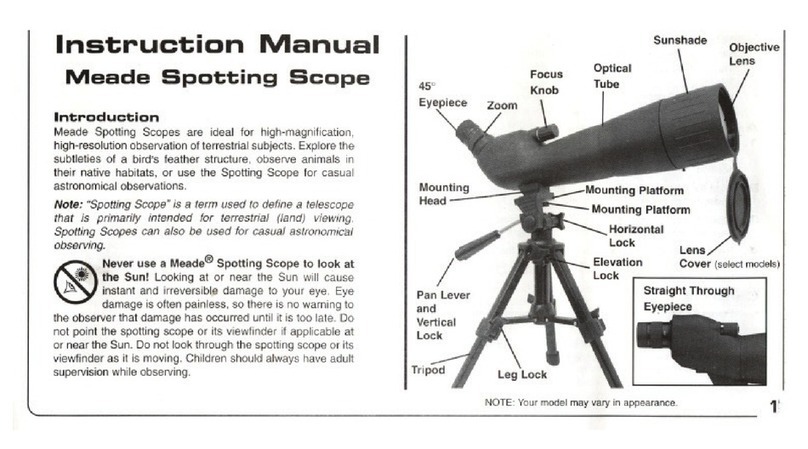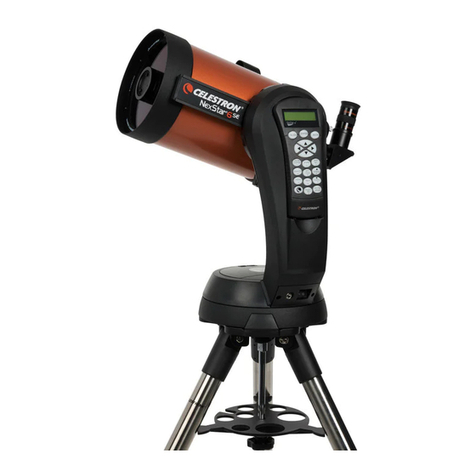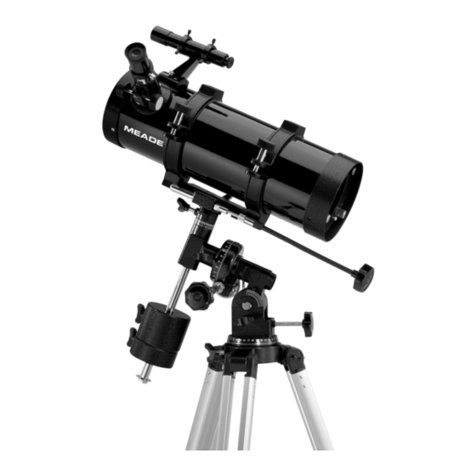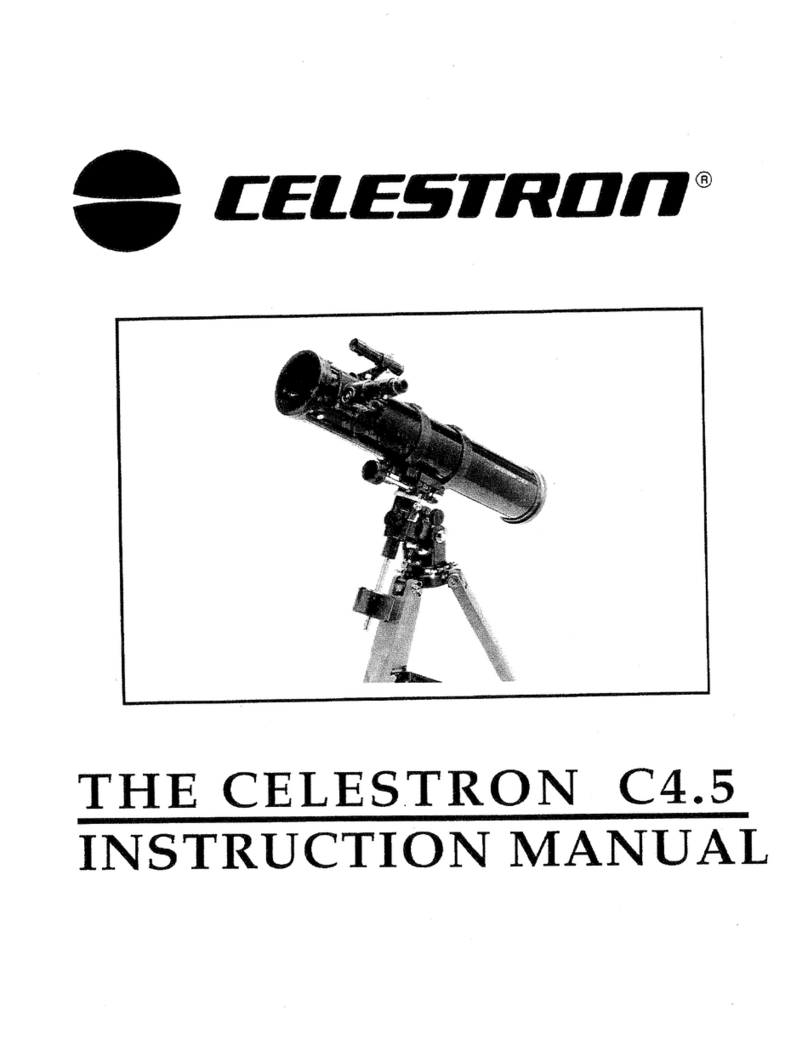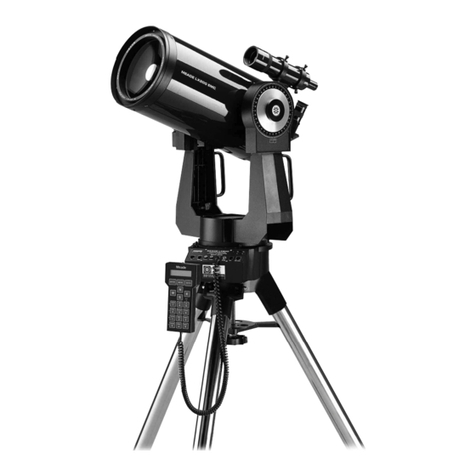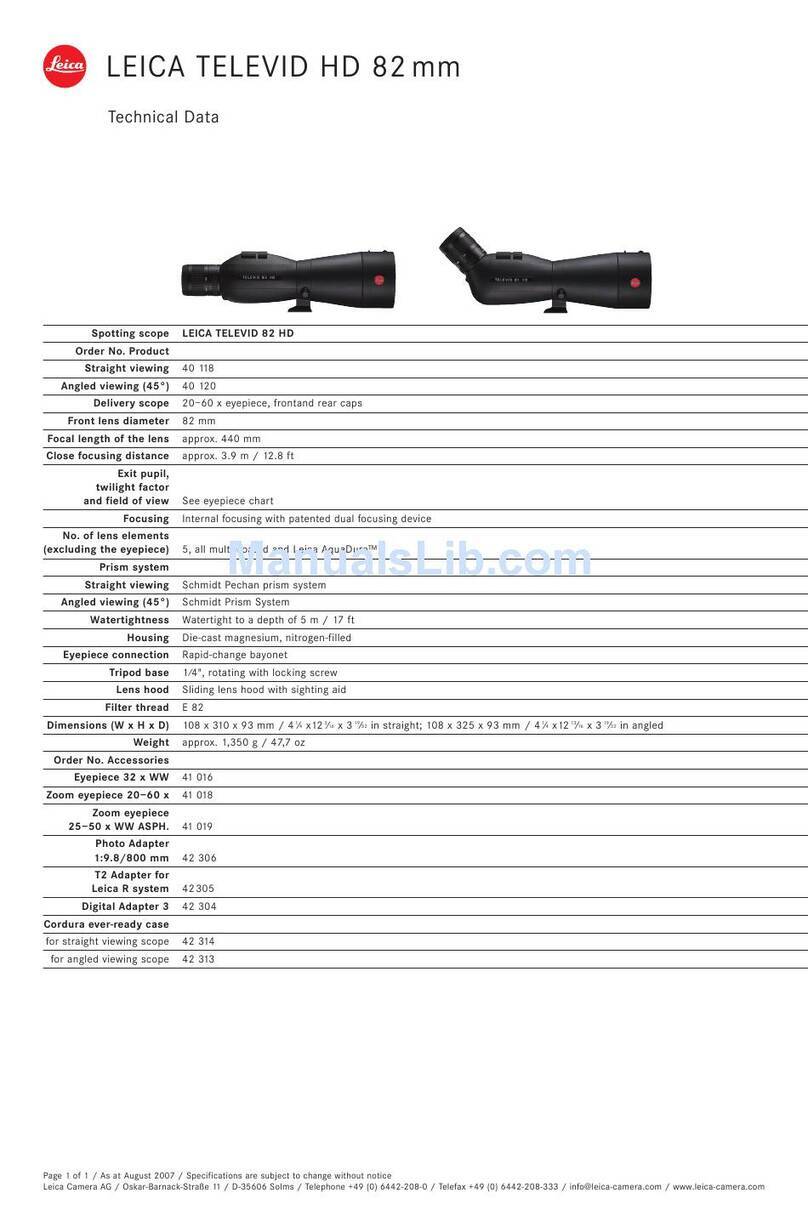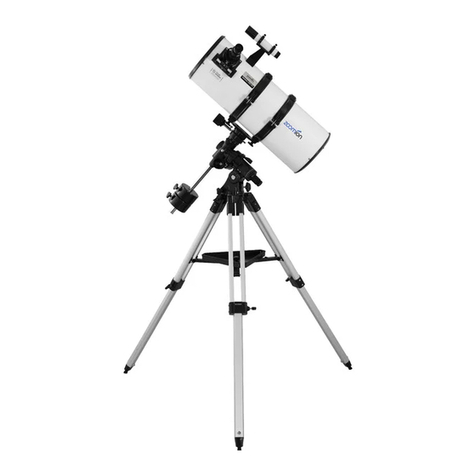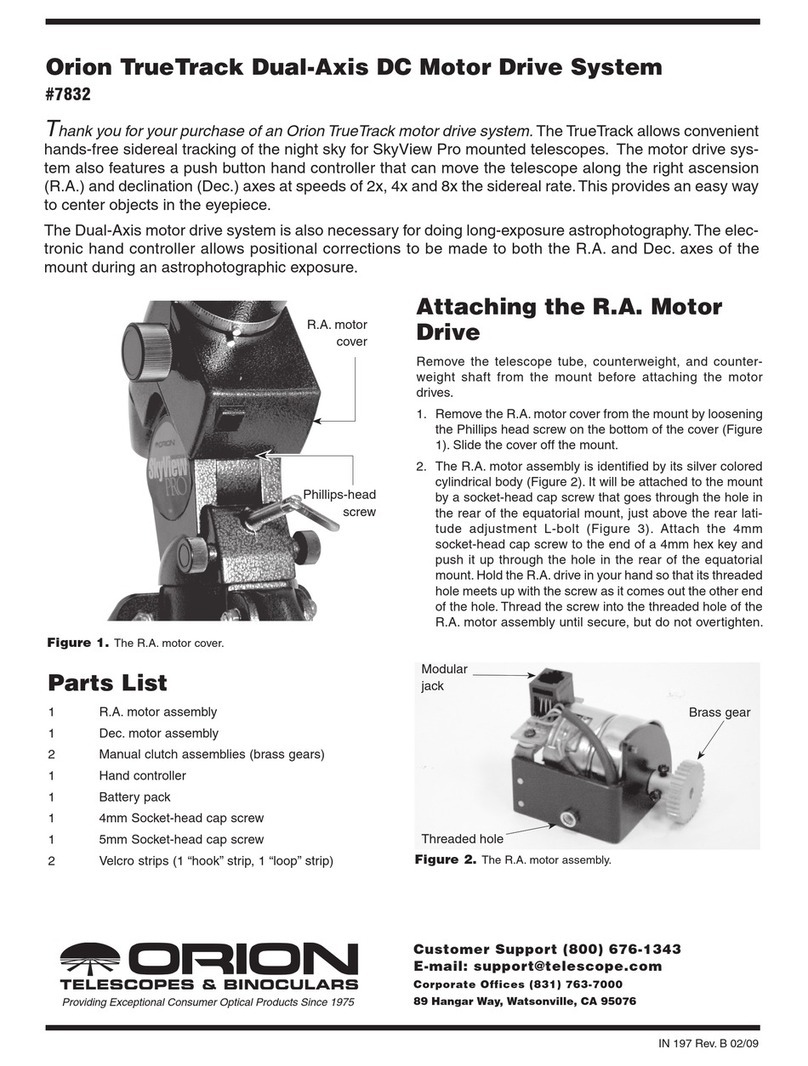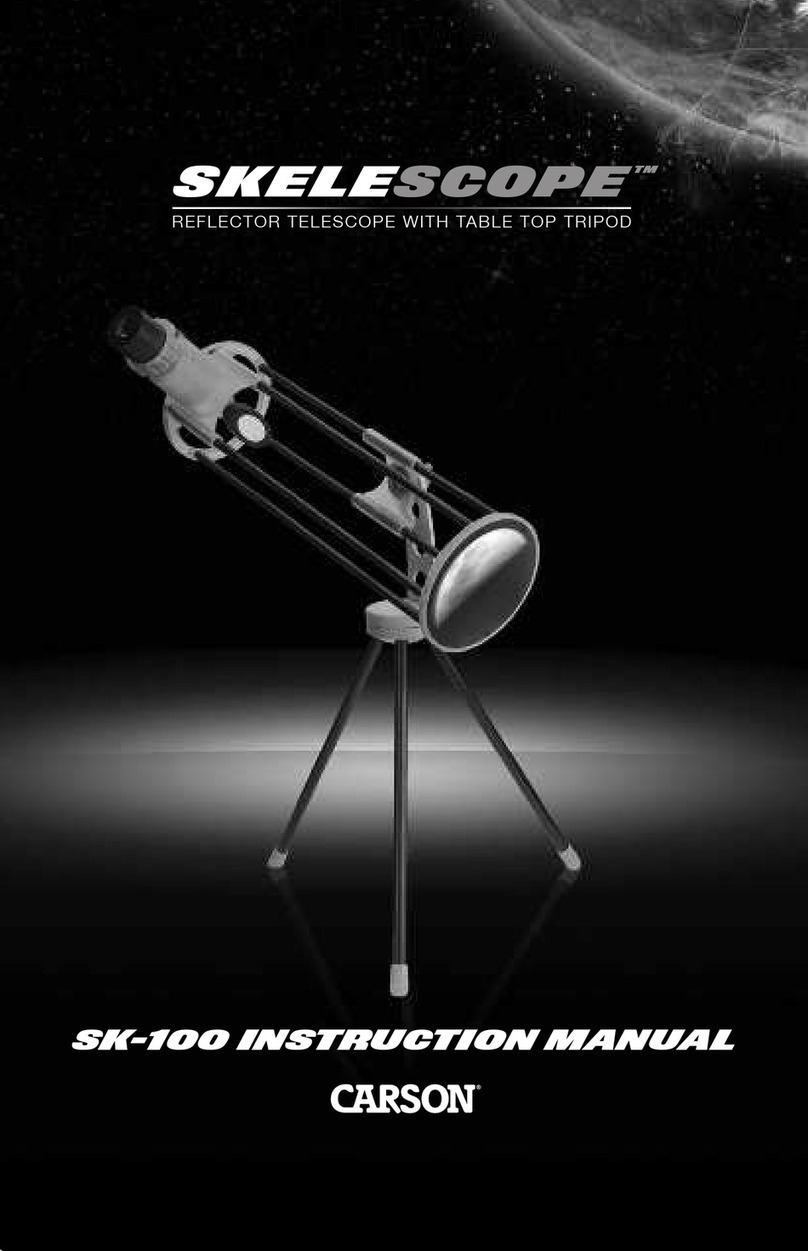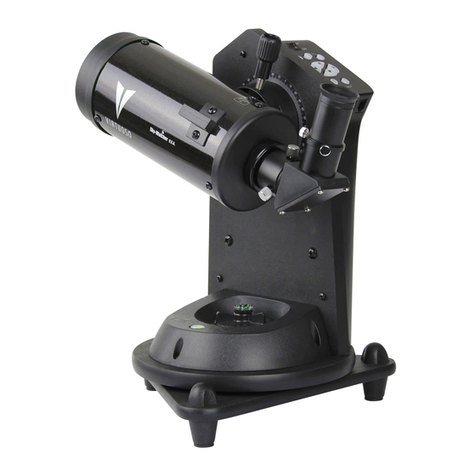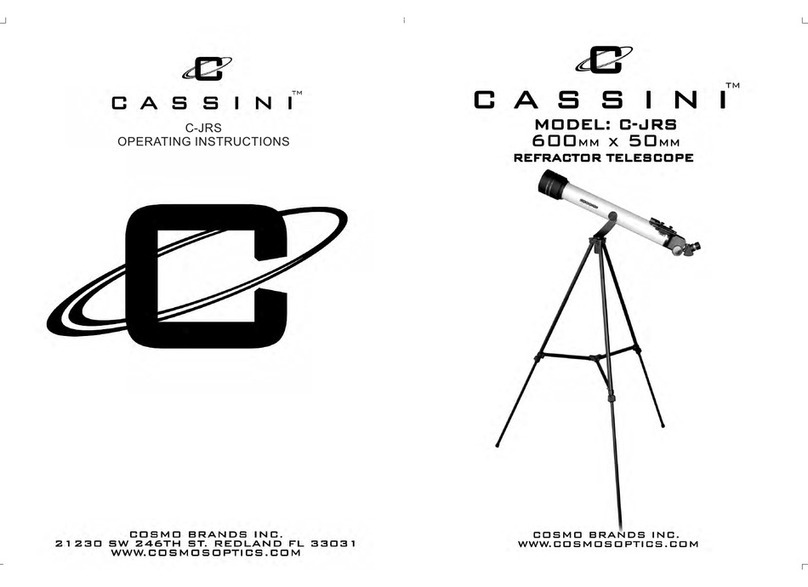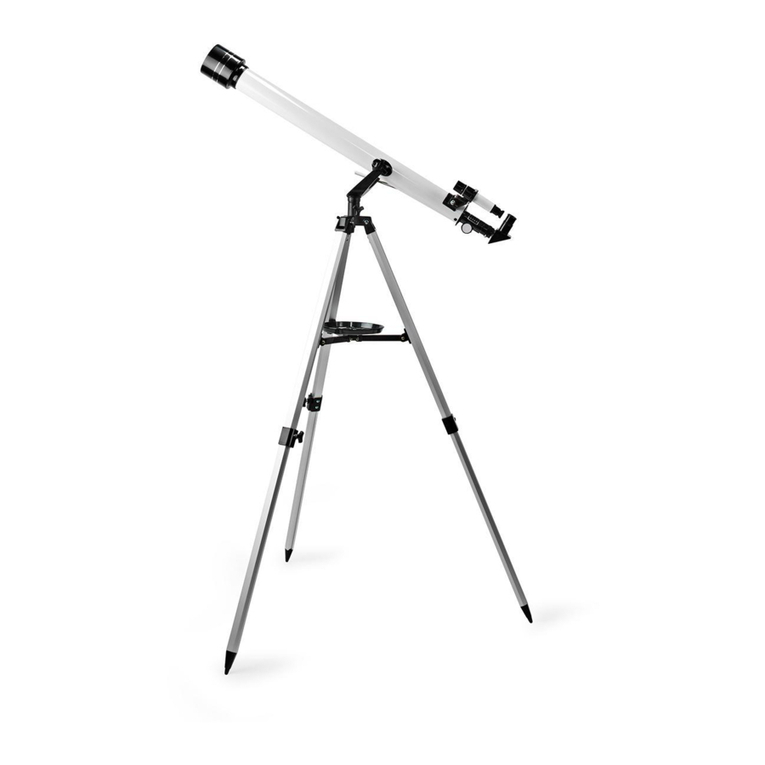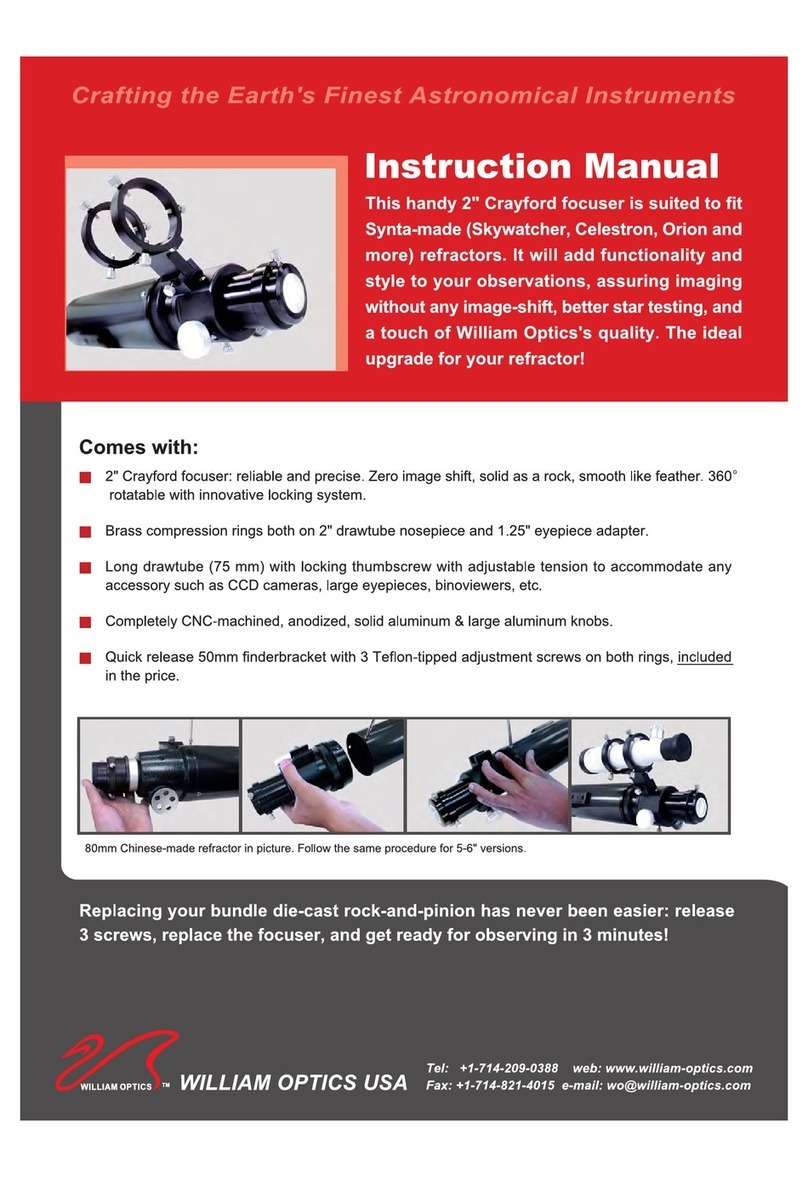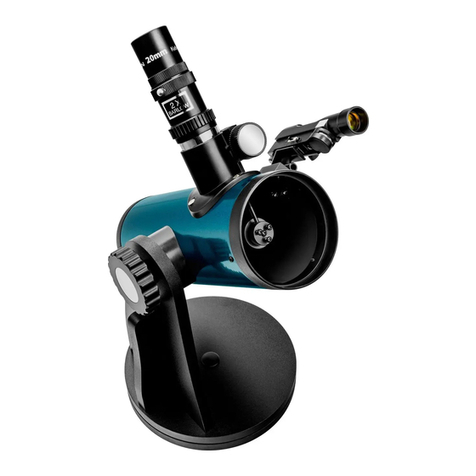
4
Telescope Terms To Know:
Diagonal: A mirror that deflects the ray of light 90 degrees.
With a horizontal telescope tube, this device deflects the light upwards so
that you can comfortably observe by looking downwards into the eyepiece.
The image in a diagonal mirror appears upright, but rotated around its
vertical axis (mirror image).
Focal length: Everything that magnifies an object via an optic lens has a certain focal length. The focal
length is the length of the path the light travels from the surface of the lens to its focal point. The focal
point is also referred to as the focus. In focus, the image is clear. In the case of a telescope, the focal
length of the telescope tube and the eyepieces are used to determine magnification.
Lens: The lens turns the light that falls on it around in such a way so that the light gives a clear image in
the focal point after it has traveled a certain distance (focal length).
Eyepiece: An eyepiece is a system made for your eye and comprised of one or more lenses. In an
eyepiece, the clear image that is generated in the focal point of a lens is captured and magnified still
more.
Magnification: The magnification corresponds to the difference between observation with the naked
eye and observation through a magnifying device like a telescope. If a telescope configuration has a
magnification of 30x, then an object viewed through the telescope will appear 30 times larger than it
would with the naked eye. To calculate the magnification of your telescope setup, divide the focal length
of the telescope tube by the focal length of the eyepiece.
How To Set Up
Note: We recommend assembling your telescope for the first time in the daylight or in a lit room so that
you can familiarize yourself with assembly steps and all components.
Please look for a suitable location for your telescope before you begin. Use a stable surface, e.g. a table.
Mount the telescope to the tripod with the locating screw for the vertical adjustment (7). Insert the eye
piece into the diagonal mirror (12.5 mm or 20 mm).
Azimuthal Mounting
Azimuthal mounting just means that you can move your telescope up and down, left and right, without
having to adjust the tripod.
Use the locating screw for the vertical fine adjustment (7) and the locating screw for the vertical axis (8)
to locate and lock the position of an object (to focus an object).
Which eyepiece is right?
First of all, it is important that you always choose an eyepiece with the highest focal width for the
beginning of you observation. Afterwards, you can gradually move to eyepieces with smaller focal widths.
The focal length is indicated in millimeters, and is written on each eyepiece. In general, the following is
true: The larger the focal width of an eyepiece, the smaller the magnification! There is a simple formula for
calculating the magnification:
Focal length of the telescope tube: Focal length of the eyepiece = magnification.
You see: The magnification is also depends on the focal length of the telescope tube. This telescope
contains a telescope tube with focal length of 360 mm. From this formula, we see that if you use an
eyepiece with a focal width of 20 mm, you will get the following magnification:
360 mm / 20 mm = 18 x magnification

